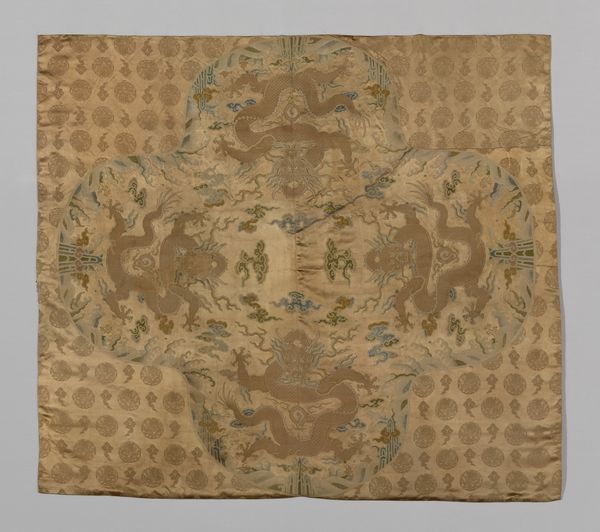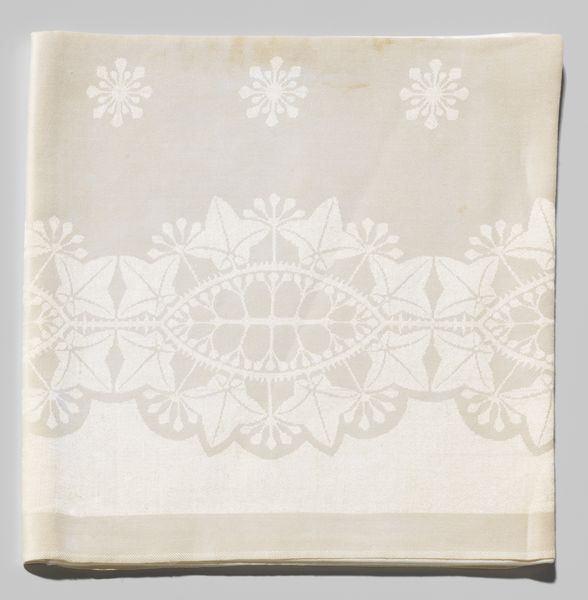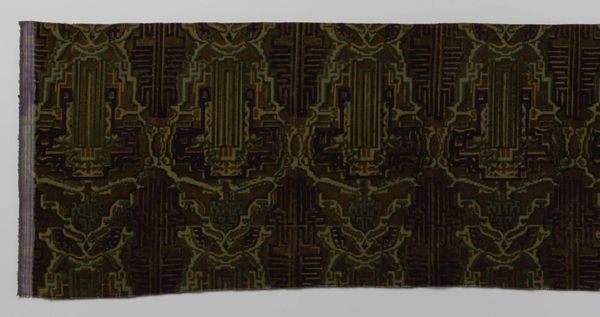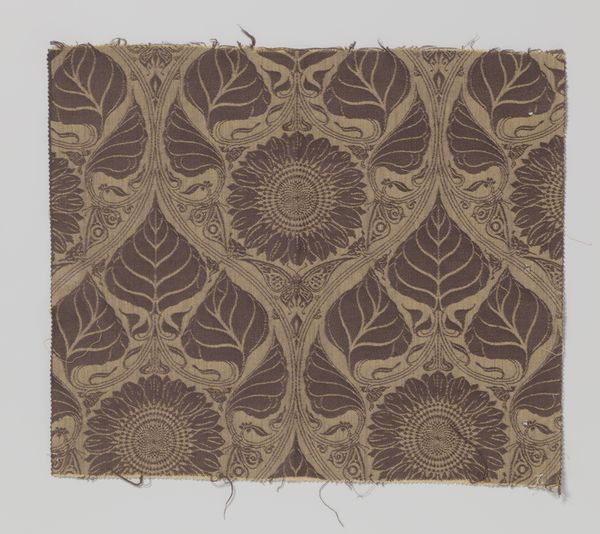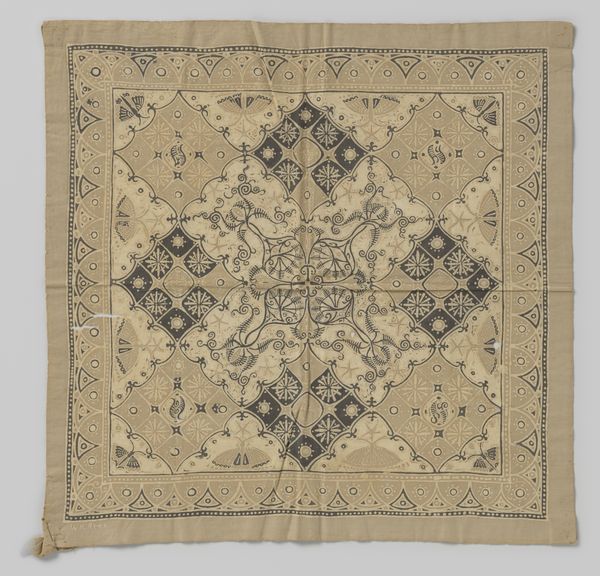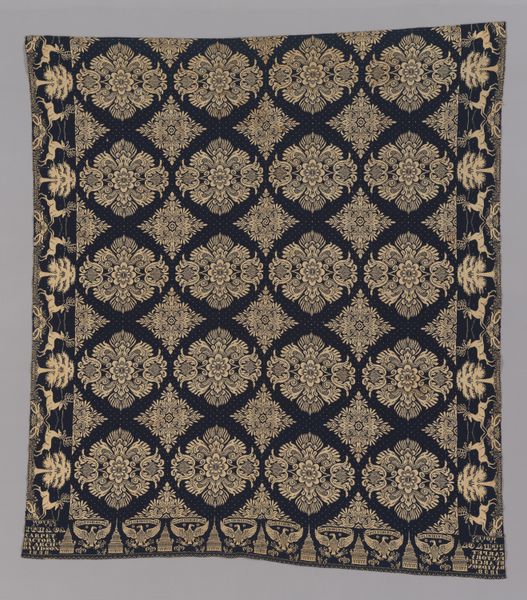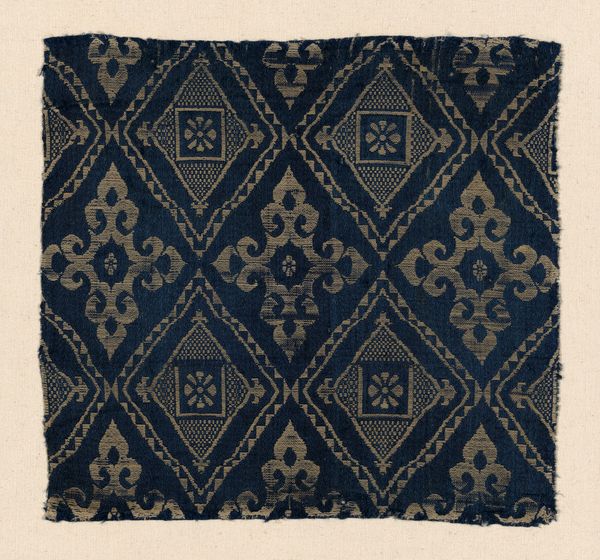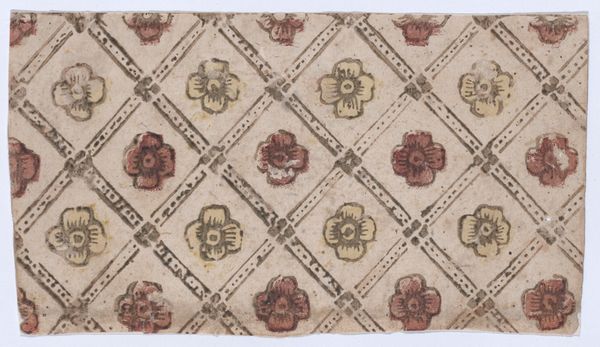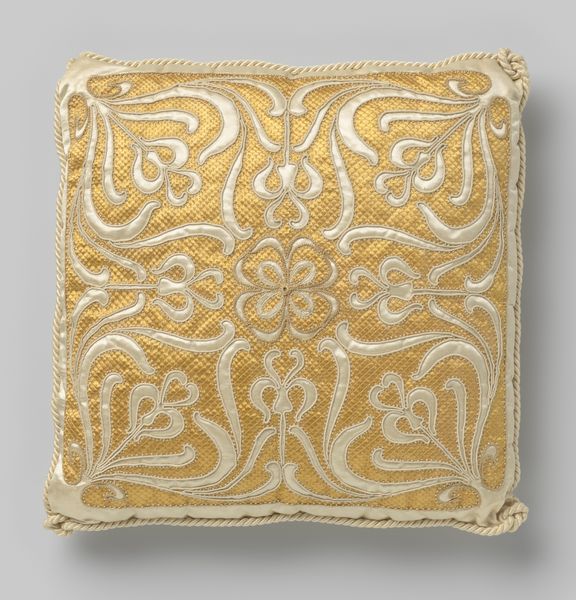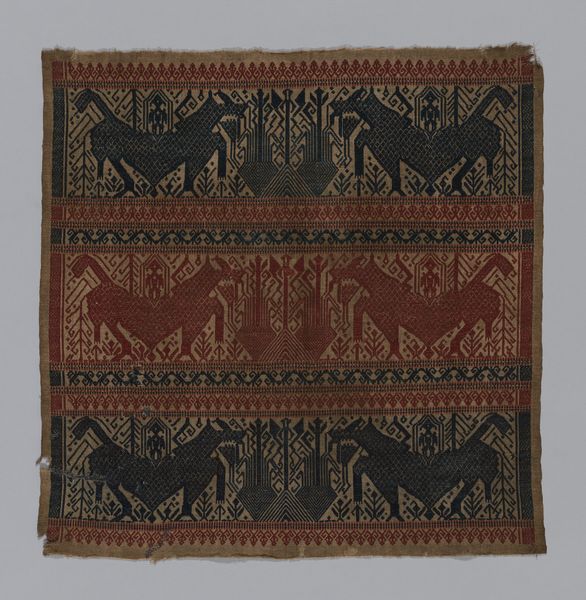
Stoelbekleding van gebatikte zijde, met een bloemenpatroon in geel en bruin c. 1910
0:00
0:00
theonieuwenhuis
Rijksmuseum
fibre-art, textile
#
natural stone pattern
#
fibre-art
#
naturalistic pattern
#
art-nouveau
#
textile
#
repetitive shape and pattern
#
ethnic pattern
#
repetition of pattern
#
vertical pattern
#
regular pattern
#
pattern repetition
#
decorative-art
#
imprinted textile
#
layered pattern
Dimensions: length 45.5 cm, width 47 cm
Copyright: Rijks Museum: Open Domain
Editor: We’re looking at a textile work titled "Stoelbekleding van gebatikte zijde, met een bloemenpatroon in geel en bruin," or "Chair Upholstery of Batik Silk with a Flower Pattern in Yellow and Brown," made around 1910 by Theo Nieuwenhuis. It’s currently housed in the Rijksmuseum. The repetitive floral design is quite calming. How do you see this piece fitting into its historical context? Curator: Considering its place and time, it's tempting to consider this work's ties to the Arts and Crafts movement. The piece speaks to a broader democratization of design during this period, don’t you think? How does the idea of "decorative art" apply to it? Editor: Well, I can see that! The function of the piece as chair upholstery really reinforces that sense of accessibility rather than, say, fine art meant only for the wealthy. Does its existence within the Rijksmuseum complicate its original function? Curator: Precisely! Presenting functional art like this in a museum setting definitely raises questions about its value and status. It removes it from its intended context. And the Art Nouveau style – with those flowing lines – was also a part of making well-designed objects more available to people. The socio-political intentions seem pretty strong. Do you think the museum presentation changes those intentions? Editor: It’s almost as though placing it in a museum implies that the democratic design becomes something rarefied. Curator: Exactly! The very act of preservation highlights a specific moment and a specific set of intentions. Food for thought on how cultural institutions shape our understanding. Editor: Definitely something to consider as we move through the rest of the museum! Thanks for the new perspective.
Comments
No comments
Be the first to comment and join the conversation on the ultimate creative platform.
